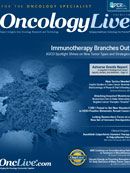Glycans Emerge as Promising Biomarkers for Early Detection of Many Cancer Types
For many years, we in the medical and research communities have tried to use proteins and DNA fragments as disease markers to find cancer early.
Carlito B. Lebrilla, PhD
Professor
UC Davis Department of Chemistry
Scientific Member
UC Davis Comprehensive Cancer Center
For many years, we in the medical and research communities have tried to use proteins and DNA fragments as disease markers to find cancer early. Unfortunately, these approaches have not produced the diagnostic tests we anticipated. While we have had some success finding markers, such as the BRCA genes for identifying women at increased risk for breast or ovarian tumors, these genetic changes by themselves cannot predict whether an individual patient will develop cancer.
But there are other molecular markers to pursue for cancer detection including glycans, the sugars attached to proteins. These complex carbohydrates help guide the formation and function of proteins, and they also are altered by cancer. When I started investigating glycans more than 20 years ago, I was among only a handful of researchers trying to figure them out. Compared with the study of proteins, glycans represent a far more difficult road.
Glycans are challenging because they are not templated. For example, in DNA a gene is a template for RNA, which in turn is a template for a protein. There are no specific genes for glycans; they are highly branched structures built from monosaccharides linked by glycosidic bonds in multiple ways.1
Glycans are added onto proteins during the process of posttranslational modification. Proteins travel as if through an assembly line in which transferases attach glycans to cell surfaces and secreted proteins, sometimes with more than a hundred glycan structures associated with a single site.2 As many as 80% of all proteins go through this process, but if a sugar chain isn’t attached properly, the protein won’t function as it should. The hard part is figuring out how the process has gone awry in cancers.
In my lab we use mass spectrometry to break glycans away from their proteins and analyze the fragments. Mass spectrometry weighs molecules by determining how fast they travel—heavier molecules just don’t travel as fast—and these measurements are then fed through a computer algorithm that compares the masses of these molecules with a library of known glycans. Given these sugars’ complexity, simply crunching the data is a huge task.
When I first started working on glycans, mass spectrometry was mostly used to investigate proteins and lacked the finer definition needed to discriminate between glycans. In some cases, we had to devise new techniques to get the resolution we needed.
Analyzing Glycans in Tumors
Understanding glycans could help illuminate a number of critical biological processes. We are investigating glycans in breast milk and their role in helping infants establish beneficial gut bacteria. Also, because immune cells can be heavily glycosylated, this work could provide insights into autoimmune disorders, HIV, and other conditions.
But our prize is cancer, and isolating glycan markers could help detect lung, prostate, gastric, ovarian, and other tumors. With many tests to detect cancer there are high false positive rates and unnecessary biopsies. We want to minimize these unneeded procedures.
Our lab is also working with cancer researcher Jay Solnick, MD, PhD, of the UC Davis Center for Comparative Medicine, who has been investigating the ramifications of Helicobacter pylori (H pylori) infection, which affects 50% of the world’s population. While H pylori can cause ulcers, gastritis, and gastric cancer, it’s difficult to determine who will develop cancer. Finding a marker that indicates which patients with H pylori are at highest risk could improve care and possibly prevent gastric cancer.
Early research has been promising. UC Davis researchers recently published a paper showing significant differences between glycan profiles for patients with gastritis or a duodenal ulcer and those with gastric cancer.3 This is good news, but it’s only a start. We still need to improve predictability so that we can create a diagnostic test with real clinical value. Glycan research also is under way in ovarian cancer.
While studying ovarian cancer cells, our lab noted significant differences between their glycans and those in healthy cells. I am now working with Gary S. Leiserowitz, MD, chief of the UC Davis Division of Gynecologic Oncology, to find ovarian cancer markers.
Again, preliminary results have been encouraging. We tested samples from healthy women, patients with borderline ovarian tumors with minimal risk to become cancer, and patients with full-blown ovarian cancer.4 The glycan profiles distinguished patients among the three groups.
While encouraging, the results still need to be validated.
Since the glycan approach doesn’t vary among the cancers, our ultimate goal of this work is to find a single diagnostic tool that could test for many types of tumors.
References
- Ruhaak LR, Miyamoto S, Lebrilla CB. Developments in the identification of glycan biomarkers for the detection of cancer. Mol Cell Proteomics. 2013;12(4):846-855.
- Lebrilla CB, An HJ. The prospects of glycan biomarkers for the diagnosis of diseases [published online November 6, 2008] Mol Biosyst. 2009;5(1):17-20.
- Ozcan S, Barkauskas DA, Ruhaak LR, et al. Serum glycan signatures of gastric cancer [published online December 10, 2013]. Cancer Prev Res. 2014;7(2);226-235.
- Kim K, Ruhaak LR, Nguyen UT, et al. Evaluation of glycomic profiling as a diagnostic biomarker for epithelial ovarian cancer [published online February 20, 2014]. Cancer Epidemiol Biomarkers Prev. 2014;23(4):611-621.




